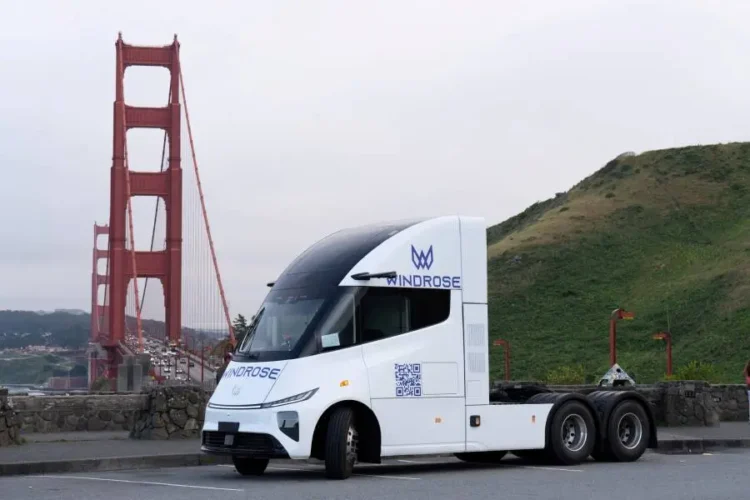Publisher: Maaal International Media Company
License: 465734
Chinese companies plan to dominate the electric heavy-duty truck market
اقرأ المزيد
Chinese companies are dominating the electric vehicle sector, and they are quietly strengthening their position in the electric heavy-duty truck production sector, but foreign tariffs and a noticeable gap in quality could create obstacles in the future, experts warn.
According to CNN, automakers are exploiting the local supply chain and the government’s low-price strategy to make China’s electric vehicle industry a global leader, and to achieve leadership in the electric heavy-duty truck sector as well.
Electric trucks currently account for less than 1 percent of truck sales worldwide, according to the International Energy Agency, but the important news is that China controls 70 percent of those small electric truck sales in 2023.
China’s heavy-duty electric vehicle fleets are seeing growing international demand even as Western countries target Chinese electric vehicles with severe sanctions.
Chinese companies such as BYD and BAIC Foton have shipped trucks to countries including Italy, Poland, Spain and Mexico, and have opened assembly plants around the world.
“Chinese trucks are competitive in emerging markets because of their low cost, but in developed markets they don’t meet the performance and durability requirements of most customers, but that’s changing over time,” Stephen Dyer of consultancy AlixPartners told AFP.
“When it comes to emissions, heavy trucks are one of the most difficult transport sectors to cut, after aviation and freight,” said Elizabeth Connelly, an analyst at the International Energy Agency. “The bigger the battery, the longer the range, but the bigger the battery, the heavier the truck, which increases fuel consumption.”
Stephen Dyer of AlixPartners said that “historically” Chinese trucks have had a shorter lifespan than European or Japanese trucks.
According to the Zero Emissions Technology Inventory, a database of global electric vehicle performance and emissions, Chinese electric heavy trucks have an average range of 250 kilometres (155 miles) after a full charge, compared to 322 kilometres for their US counterparts. But Chinese manufacturers could quickly close the gap, with Chinese startup Windrose saying its semi-heavy trucks can travel up to 670km on a single charge.
Meanwhile, battery giant CATL has launched a battery swap mechanism for trucks, where exhausted units can be replaced instantly, eliminating charging time altogether.
China’s existing electric vehicle manufacturing ecosystem is a huge advantage, with Windrose founder Han Wen saying his company was using another electric bus manufacturer’s factory to make its trucks. “We’re very lucky to have the Chinese EV supply chain,” he said.
On the flip side, this year major trading partners including the European Union and the United States have imposed high tariffs on Chinese electric vehicles, saying Beijing’s state aid to automakers is undermining their own companies’ growth prospects.
US President-elect Donald Trump has promised huge tariff increases on Chinese imports once he takes office. But some Chinese companies have already taken steps to mitigate those risks. BYD boasts that its trucks are “assembled by union workers in Lancaster, California,” has announced plans to build another factory in Mexico, and has factories in Hungary and Romania. Windrose’s Han Wen said the company has spread its operations across multiple countries, moving its headquarters to Belgium earlier this year. “We accept that every major market wants to create its own local supply chain for electric vehicles,” he said. “But you have to start in China and then try to take the supply chain to the rest of the world. There’s no alternative to that.”








